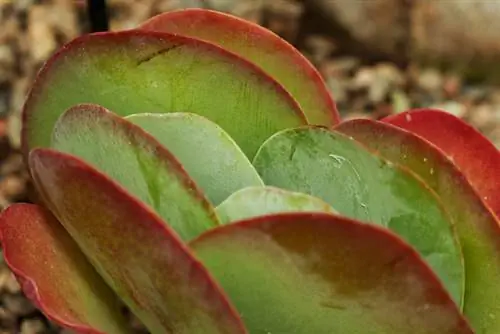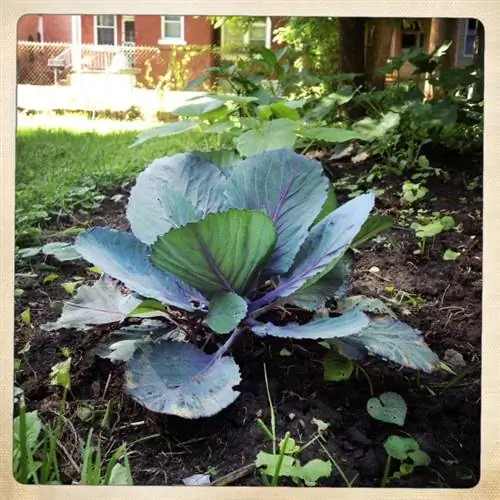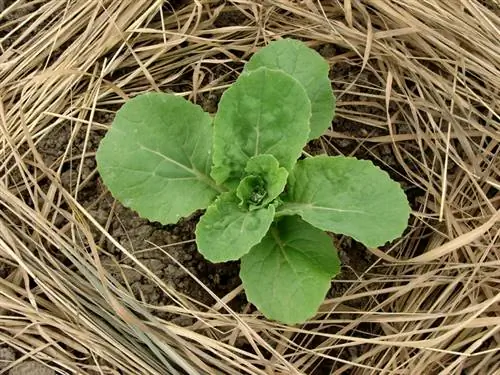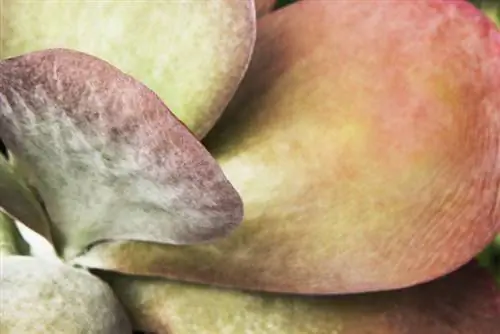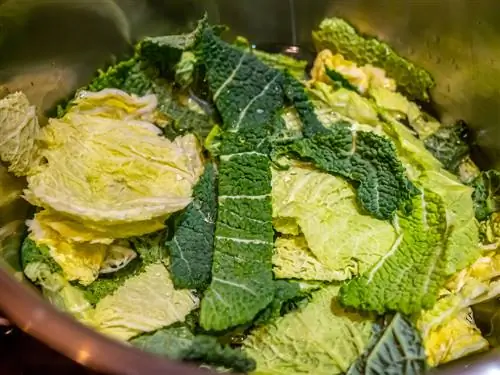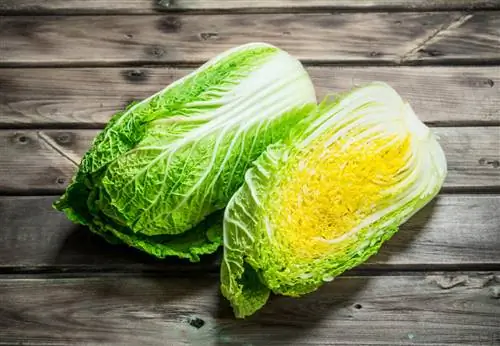- Author admin [email protected].
- Public 2023-12-16 16:46.
- Last modified 2025-01-23 11:21.
The thick-fleshed leaves of the Kalanchoe Thyrsiflora are vaguely similar to those of some types of cabbage, which gave the attractive houseplant the German name Wüstenkohl. If the plant receives enough light, the leaf edges and leaf surfaces turn a deep red, which gives the succulent a particularly attractive appearance. The desert cabbage is a very undemanding roommate whose care does not pose any particular challenges, even for people without the proverbial green thumb.

How do I properly care for a Kalanchoe Thyrsiflora (desert cabbage)?
Caring for the Kalanchoe Thyrsiflora (desert cabbage) is simple: water sparingly when the substrate is dry, fertilize every four weeks, repot every three years and cut only when necessary. Place the plant in a sunny location for optimal color.
How to water?
The water requirement of this Kalanchoe is very low because it is able to store liquid in its thick leaves and feed on it for quite a while. You always have to water when the top centimeters of the substrate feel dry after the thumb test. Pour away any excess water in the saucer, as the succulent is very sensitive to waterlogging.
How to fertilize?
The desert cabbage is also very undemanding in this respect. It is sufficient to fertilize every four weeks during the growing season with a commercially available liquid fertilizer (€6.00 on Amazon).
When will we repot?
Since this Kalanchoe grows relatively slowly, it usually only needs a larger planter every three years. You should repot at the latest when roots grow out of the drainage holes. The ideal time for this measure is spring.
When and will it be cut?
It only needs to be cut very rarely:
- Cut off the spent flower stalks, which unfortunately do not develop very often when grown indoors, deep above the ground.
- Rotted shoots, i.e. thin and long growing ones, are also cut out in spring.
How do you overwinter?
You can overwinter this succulent either in a cool place, at temperatures between 10 and fifteen degrees, or in living rooms at around 20 degrees. Keep the Kalanchoe Thyrsiflora even drier in winter than in summer, watering only in sips.
Are there threats of pests or diseases?
Desert cabbage is rarely attacked by pests or diseases.
- Root rot occasionally occurs due to excessive watering. In this case, place the succulent in fresh cactus soil and water significantly less in the future.
- Mealybugs or mealybugs usually disdain the fleshy leaves. Commercially available insecticides or biological contact agents are helpful here.
- Mildew, which occasionally causes problems for other Kalanchoe species, hardly shows up on desert cabbage.
Tip
If the desert cabbage is too dark, the leaves remain simply green. Therefore, always place the plant in a full sunny location.

